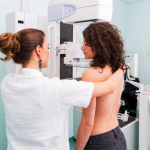What is microdermabrasion?
Microdermabrasion is a minimally invasive skin treatment that buffs away the outermost layer of the skin to create a smoother and younger appearance.
After the treatment, a new layer of skin forms. Often several treatments are needed to obtain the required results.
What is microdermabrasion used for?
Microdermabrasion is typically used as a cosmetic procedure to treat wrinkles, sun-induced pigmentation (darkened skin), acne scarring, enlarged pores and ‘stretch marks’. It may be combined with medicines applied on the skin to treat acne.
What does microdermabrasion involve?
The exact procedure may differ from clinic to clinic. The skin is usually first cleansed of any makeup. Tiny crystals are then sprayed onto the skin by a hand-held device while vacuum suction is used to remove the used crystals and skin cell debris. Some microdermabrasion devices use diamond-tipped wands, instead of crystals, to buff the skin.
Local anaesthesia to numb the skin is usually not required, although you may experience mild and temporary discomfort and skin redness afterwards.
Following the procedure, you will probably be asked to use sunscreen or avoid sun exposure for a few days.
Is microdermabrasion safe?
If performed properly by trained personnel, microdermabrasion has minimal side effects. However, if performed aggressively (such as prolonged applications of high-pressure settings), bruising or pinpoint bleeding may occur. Scarring and infection are considered rare.
Is microdermabrasion effective?
Multiple treatment sessions are usually needed to improve the appearance of fine wrinkles and minor acne scarring. As microdermabrasion only acts on the outermost skin layer, it is not as effective as aggressive therapies – such as chemical peels and laser resurfacing – for deeper wrinkles and scars.
However, microdermabrasion has the advantages of:
- being considered relatively painless
- having minimal risks (if performed properly)
- not needing any time off for recovery
If you are considering microdermabrasion, discuss your expectations as well as the number and frequency of treatments required for results with your clinic.
What risks are involved with microdermabrasion?
There is a risk that microdermabrasion can spread infections from one part of your skin to another. So you should not have microdermabrasion if you have skin infections such as impetigo, or have had warts, herpes and other viral infections. Sometimes it can make other conditions like rosacea flare up.
Microdermabrasion is not suitable for people with, bleeding disorders, open sores, warts or sunburn, or those who develop keloid scars should avoid the technique.


